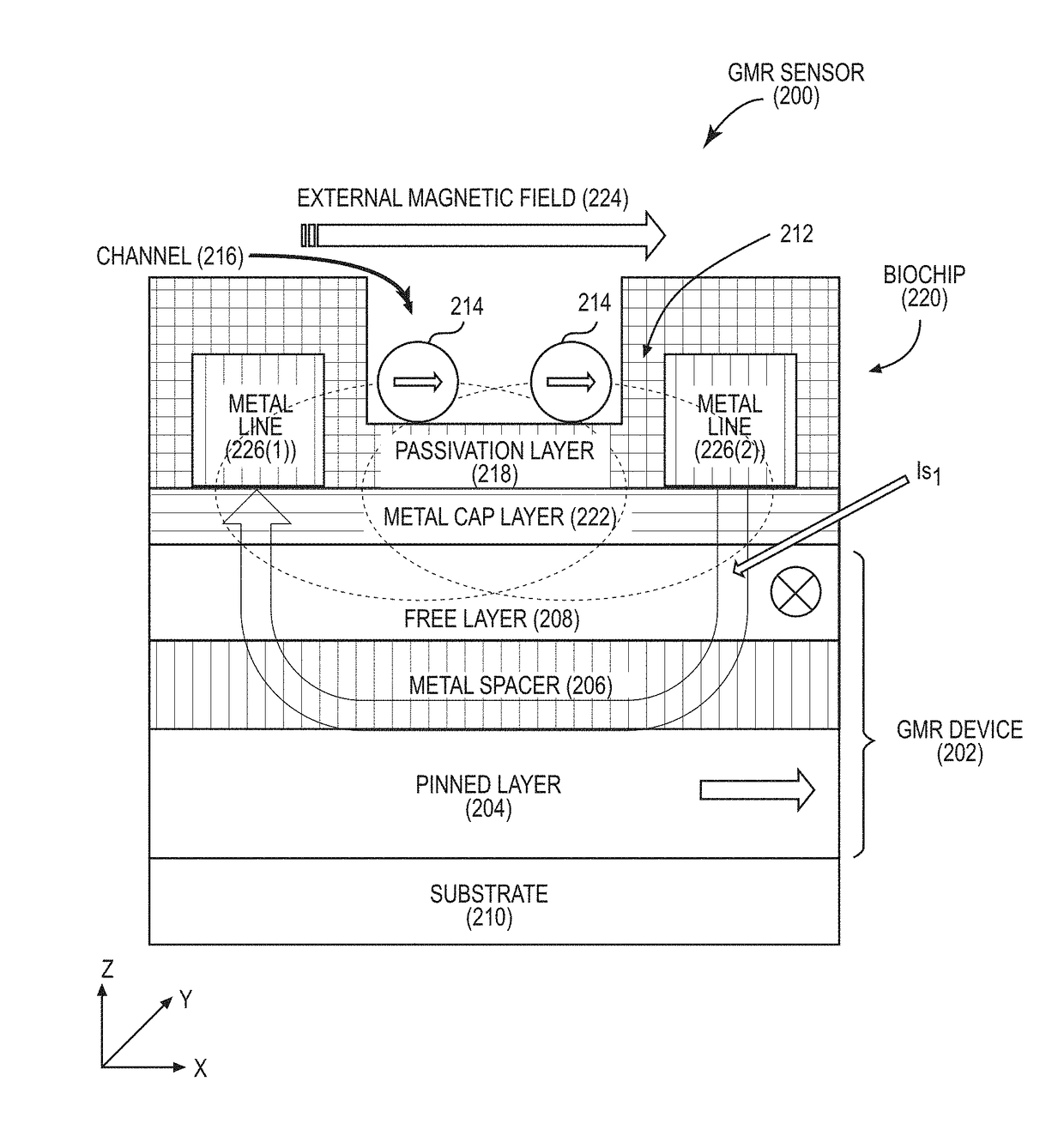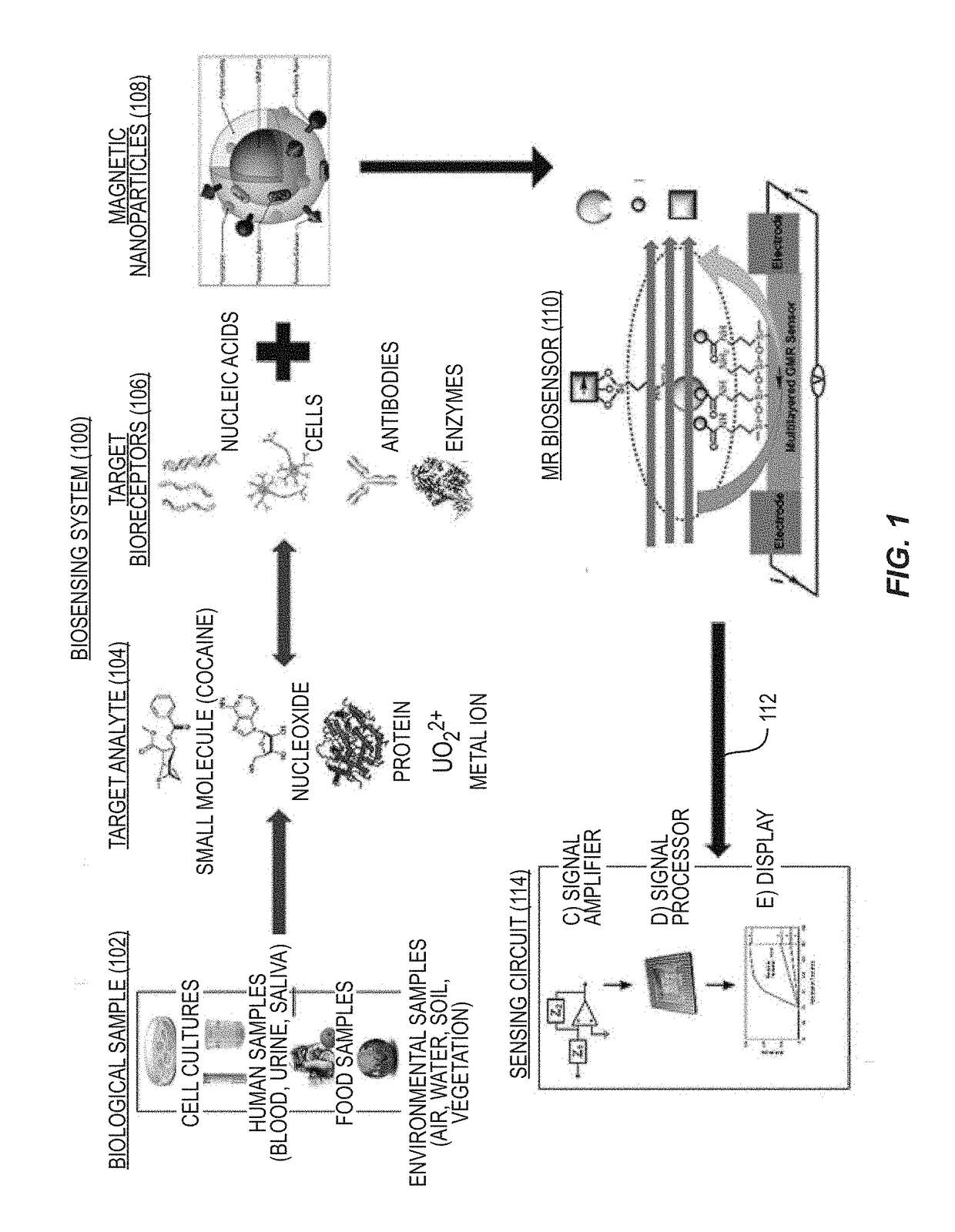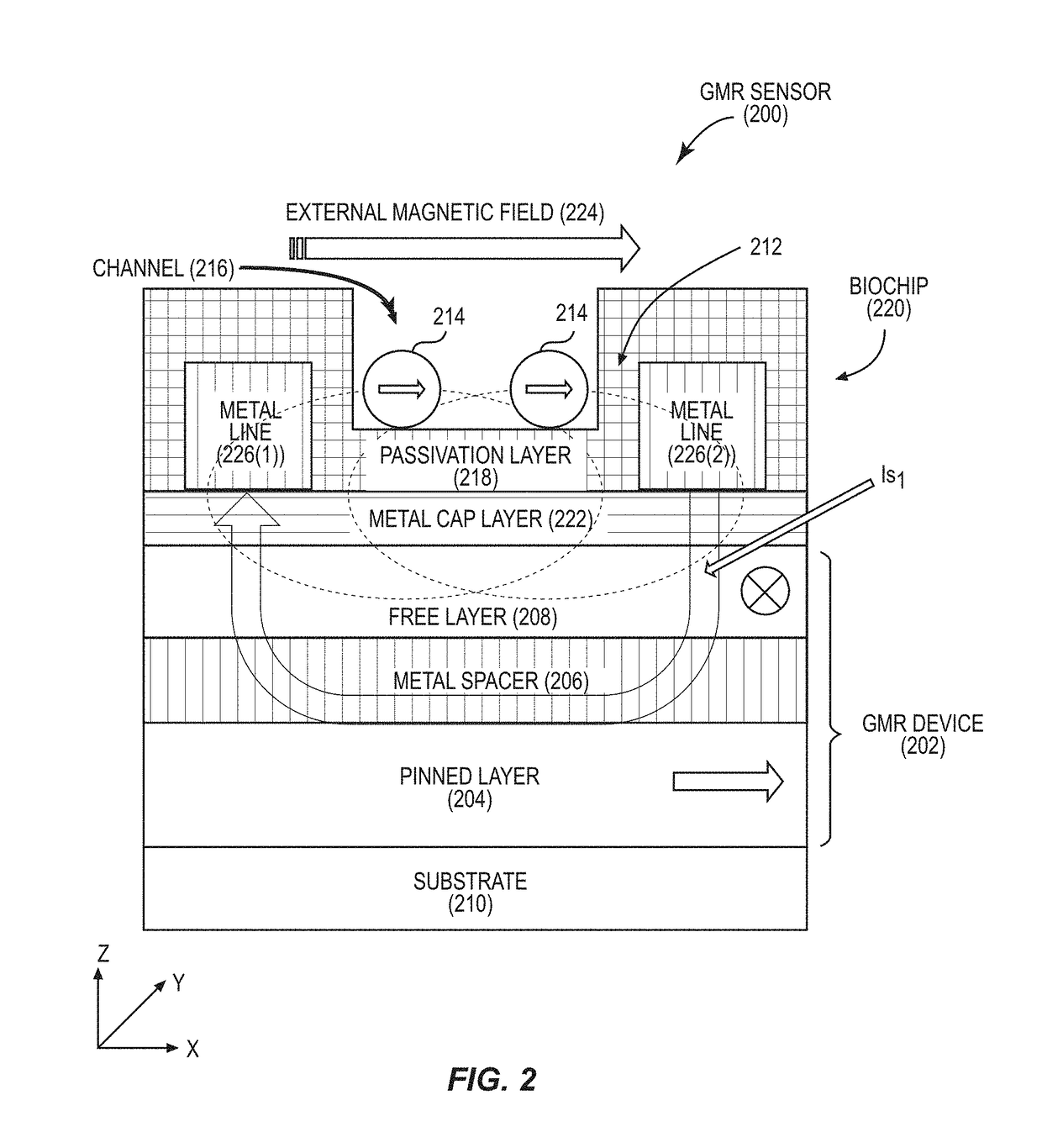Tunnel magneto-resistive (TMR) sensors employing tmr devices with different magnetic field sensitivities for increased detection sensitivity
a technology of magneto-resistive sensors and tunnel magneto-resistive sensors, which is applied in the field of magneto-resistive devices, can solve the problems of increasing the coercivity of free layers, and reducing the detection sensitivity of tmr sensors, so as to achieve the effect of increasing the detection sensitivity
- Summary
- Abstract
- Description
- Claims
- Application Information
AI Technical Summary
Benefits of technology
Problems solved by technology
Method used
Image
Examples
Embodiment Construction
[0029]With reference now to the drawing figures, several exemplary aspects of the present disclosure are described. The word “exemplary” is used herein to mean “serving as an example, instance, or illustration.” Any aspect described herein as “exemplary” is not necessarily to be construed as preferred or advantageous over other aspects.
[0030]Aspects of the present disclosure involve tunnel magneto-resistive (TMR) sensors employing TMR devices with different magnetic field sensitivities for increased detection sensitivity. For example, a TMR sensor may be used as a biosensor to detect the presence of biological materials. The TMR sensor may be fabricated as a biosensor chip using semiconductor fabrication methods. The TMR sensor includes TMR devices that each include a magnetic tunnel junction (MTJ) comprised of a pinned ferromagnetic layer having a fixed magnetization (i.e., magnetic moment) and a free layer having a free layer magnetization that can rotate in the presence of a magn...
PUM
 Login to View More
Login to View More Abstract
Description
Claims
Application Information
 Login to View More
Login to View More - R&D
- Intellectual Property
- Life Sciences
- Materials
- Tech Scout
- Unparalleled Data Quality
- Higher Quality Content
- 60% Fewer Hallucinations
Browse by: Latest US Patents, China's latest patents, Technical Efficacy Thesaurus, Application Domain, Technology Topic, Popular Technical Reports.
© 2025 PatSnap. All rights reserved.Legal|Privacy policy|Modern Slavery Act Transparency Statement|Sitemap|About US| Contact US: help@patsnap.com



